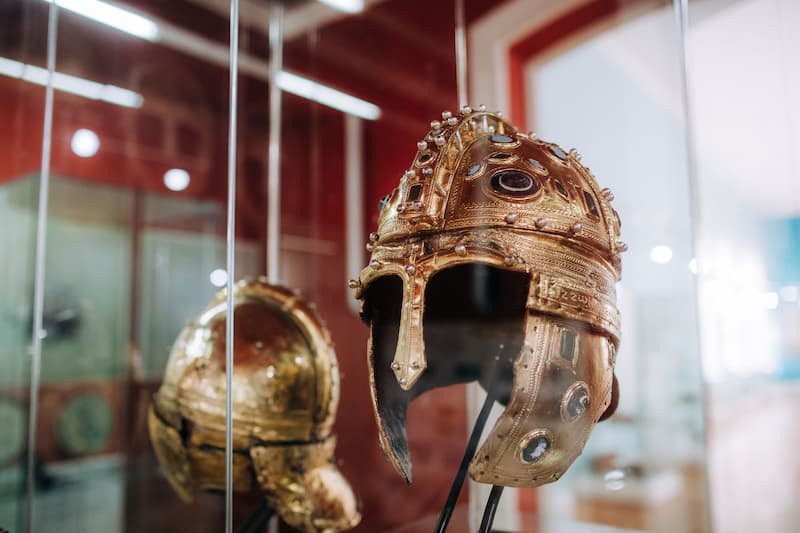Throughout
history, Novi Sad has built its identity on migratory flows and thus become
recognizable as a multicultural city, i.e. a place of meeting and intertwining
of ethnic groups. Within the second programme arch of the European Capital of
Culture – Migrations – we deal with the topic of migration and recall the story
of migration in the area of Pannonia.
Therefore, we
ask the question – was there a city before Novi Sad, which received the coat of
arms and name in 1748? We ask this question at a time when migration is the
most current topic in the whole of Europe, and Novi Sad is now officially on
the European cultural map.
According to the
oldest archeological findings, there is strong evidence that there was a
settlement of prehistoric people in the area of today Petrovaradin,
inhabited from the 6th millennium BC. Life takes place within
today’s Novi Sad and its surroundings for
more than 7000 years, from the Neolithic Starčevo culture, one of the
oldest in Europe, through the Roman era, and the period of great empires.
Cusum
as a City Before a City
A century before
the new era, in the area of the Petrovaradin rock, the ancient settlement of Cusum and the Roman fortification Castellum
Cusum grew up. It can be assumed that it was actually a city before the city,
but also an important place of defence of the Roman Empire.
A magnificent
trace of the history of migration in this area at that time, are three glorious Roman helmets from the 4th
century, which are kept today in the largest museum in Novi Sad – Museum of Vojvodina. This
cultural institution is the only museum in the world that keeps as many as
three gilded Roman helmets. It is unique in Europe for these 17-century-old,
valuable exhibits, discovered in the Roman province of Lower Pannonia. So far,
there are about fifteen of them found
across the European continent, and only in Serbia, as many as three are in
the same museum. These helmets are the guardians of the cultural heritage of
Novi Sad, the capital of culture, as well as the whole of Serbia.
Where
Migration Ends – From Roman Pannonia to Present Day Vojvodina
The large exhibition that opened on the Day of the City of Novi Sad in the
Museum of Vojvodina, brings us closer to the historical background of these
three unique archaeological artifacts in an innovative way. Find out how they
got to our area, who found them and visit this great exhibition with some prior
knowledge.
How Were Helmets Found?
In the fifties of the 20th century, in the Srem villages of Berkasovo (near Šid) and Jarak (near Ruma), not far from Novi Sad, precious archeological remains, gilded helmets of extraordinary beauty, of the great and powerful Roman Empire, were found. They date back to the time when the emperors Constantine the Great and Licinius fought for the throne, after they passed the Edict of Milan, the first act of religious tolerance, in 313.
Two gilded helmets from Berkasovo arrived at the Museum of Vojvodina after a local, Angelina Vrkatić, took them out of the field. When she saw them for the first time, she first did not cultivate that part of the country out of fear, fearing that it might be unexploded grenade, which was not a rarity in Srem fields in the post-war period. Gathering the courage to eventually dig them up, she damaged one with a hoe, but took them to a local jeweler for evaluation, wishing to sell gold helmets. However, as the gilding on them was a thin layer, the jeweler advised her to hand them over to the museum, because in that way she would preserve the value of the artifact. Since then, helmets have been a permanent exhibit of the Museum of Vojvodina, and thus delight the scientific and general public with their appearance. In addition to helmets, in the same village (Berkasovo), archaeologists of this museum later excavated parts of horse equipment – silver belt ornaments, a belt nut, etc.
The third Roman gilded helmet was found in the village of Jarak, which was also accidentally spotted by a resident of the village of Hrtkovci, Živko Rajaković, during the summer of 2006. Namely, he dug a small gray ceramic jug with a silver gilded payment, as well as numerous decorative rivets, as well as two silver buttons, which testify to the remains of a former Roman helmet. At the end of the same year, the archeological team inspected the objects and determined that it was another Roman helmet. Curators had an arduous period of returning the object to its original appearance, as well as the reconstruction of the helmet by simply fitting a complex puzzle.

Who
Could Wear Helmets like This?
The helmets
belonged to high-ranking officers in the Roman army, but also to members of
cavalry troops. One of the two found in Berkasovo had inscription Disonus,
wear in health – the work of Avita. Based on that, we have information
about the owner and the master who made it (these were specially trained craftsmen
who made luxurious and expensive weapons), by order of the emperor, and as a
reward for exceptional military merits. The helmet from Jarak also has traces
of a hard-to-read Latin inscription.
The exhibition Where Migration Ends –
From Roman Pannonia to Present Day Vojvodina is open at the Museum of Vojvodina
until 30 April.
Author: Marina Marić
Photo: Vladimir Veličković, Jelena Ivanović







